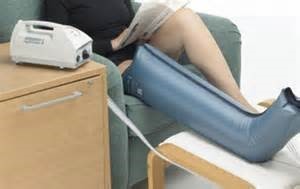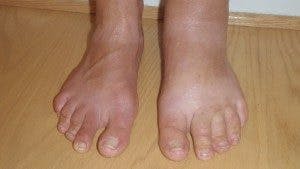By Stephanie Wilfong, DPT

Whenever we hear the word “lymph,” it is most often associated with lymph nodes. We have lymph nodes throughout our entire body that work with the venous system to remove waste substances from our bodies. When there is a disruption to the lymph system and the fluid cannot be drained properly, lymphedema can result. This is seen most often as swelling in an arm or leg.
A frequent cause of lymphedema is the surgical removal of lymph nodes. Radiation therapy can also damage the lymph system. Sometimes the body can compensate, where no lymphedema may occur. Other times, lymphedema may occur soon after the initial injury to the lymph system or after a delay of several years. There is no cure for lymphedema, but a physical therapist certified in lymphedema treatment can assist in managing your symptoms.
In order to reduce your risk of lymphedema, some items to keep in mind include:
- Avoid anything tight or binding on the affected extremity, such as clothing, jewelry, or blood pressure cuff.
- Avoid excessive heat on the affected extremity, such as a hot tub or heating pad.
- Avoid any trauma to the affected extremity, such as cuts or scratches. Wear gloves when doing housework if the upper extremity is involved.
- If you plan to travel on an airplane, those with lymphedema or at risk for developing lymphedema, should wear an appropriate compression sleeve.
- Exercise is important, but be sure not to overtire the affected extremity.
Lymphedema treatment may include:
- Manual Lymph Drainage – a specialized massage to encourage the movement of the lymph fluid from the extremity.
- Compression – this may utilize a machine, bandaging, or a compression garment (like a heavy duty stocking).
- Exercise – light exercises designed for your specific needs.
If you have any questions as to how physical therapy can help manage your lymphedema symptoms, we at Purcellville Orthopedic Physical Therapy are here to help!



